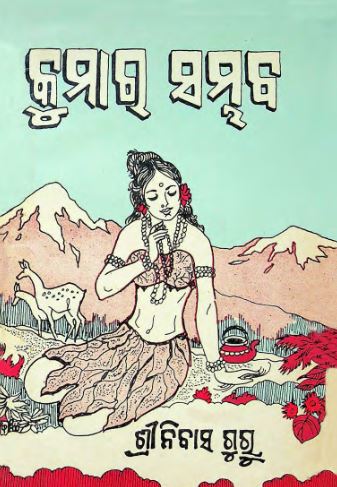Kumar Sambhab, originally “Kumarasambhava” in Sanskrit, is a profound epic poem penned by the revered classical poet Kalidas. Known for his exquisite mastery over the Sanskrit language, Kalidas is often hailed as the Shakespeare of India. The poem exquisitely illustrates the birth of Kartikeya, also known as Kumar, the son of Lord Shiva and Parvati, who is destined to become the commander-in-chief of the gods. In 1995, this timeless classic was skillfully translated into Odia by renowned scholar Srinibas Guru, making it accessible to a wider audience by enriching the Odia literary landscape.
The poem is divided into various cantos, each delving deeply into the intricate layers of divine love, duty, and cosmic battles. Kalidas employs a rich tapestry of metaphors, similes, and vibrant imagery that effortlessly brings to life the heavenly realms, the majestic Himalayas, and the compelling emotions of gods and goddesses. Guru’s translation not only preserves these elements but also imbues them with the rhythmic charm and culturally resonant nuances unique to the Odia language.
Central to “Kumar Sambhab” is the love story of Shiva, the ascetic god, and Parvati, the daughter of the mountain king Himavat. Parvati’s profound devotion and relentless penance to win Shiva’s affection serve as the emotional cornerstone of the narrative. Kalidas portrays her devotion with such poignancy that it transcends mere admiration and evokes a sense of spiritual purity and steadfastness. Srinibas Guru, in his translation, captures this emotional intensity and conveys it in a manner that resonates deeply with Odia readers.
One of the most remarkable aspects of this translation is how Guru melds Kalidas’ sophisticated poetic constructs with the simplicity and elegance of the Odia language. His translation is not a mere word-to-word conversion but a thoughtful recreation that maintains the sanctity of the original text while infusing it with cultural and linguistic attributes familiar to Odia speakers. Through Guru’s lens, readers experience the grandeur of the Himalayas as “Mana Parvata” and the celestial beauty of Parvati as “Himagiri Kumari,” invoking a rich, localized imagery that is both vivid and evocative.
The epic’s exploration of higher philosophy, dharma (duty/righteousness), and the transcendental aspects of love and life anchors it on a universal plane, making it timeless. Yet, within the framework of this translation, these themes are rendered in a way that aligns beautifully with the spiritual and literary ethos of the Odia culture. Guru meticulously ensures that the lyrical quality of Kalidas’s verses is preserved, endowing the translation with a melodious and rhythmic flow that mirrors the cadence of the original Sanskrit verse.
Additionally, the interplay between human frailties and divine duties is carefully balanced, presenting a narrative that is both relatable and aspirational. The birth of Kumar, destined to overcome the demon Tarakasura, symbolizes the triumph of good over evil, resonating with the core values of resilience and righteousness upheld in Odia cultural narratives.
Published in 1995, this translation of “Kumar Sambhab” by Srinibas Guru represents a significant contribution to Odia literature. It offers a bridge between classical Sanskrit literature and contemporary Odia readership, preserving the ancient epic’s spiritual and literary grandeur while making it accessible and appealing to modern audiences. For scholars, poets, and general readers alike, this book stands as a testament to the enduring power of poetic storytelling and the rich heritage of Indian literature.
Books Info
| Books name | Kumar Sambhab/କୁମାର ସମ୍ଭବ |
| Author | Kalidas; Srinibas Guru, Tr. |
| No Of pages | 88 |
| Publisher | Sri Debadas Banua |
| Publication | 1995 |
| Printed At | Santosh Printers |
| Distributor | NA |

